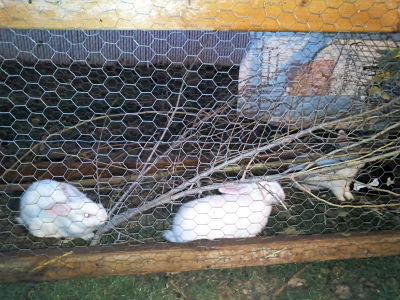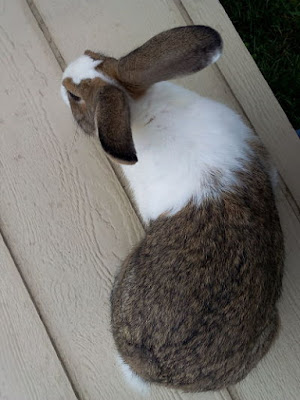Despite the title of this post, this experiment is on rabbits. It was inspired from reading biographical stories of American Indians and fur trappers on how they fed their horses during the winter months, primarily on cotton wood bark, stems and branches.
I've gathered fresh branches from Chinese elm, Russian olive and cottonwood. I'll also include the Jerusalem artichoke stalks in their feed. No pellets will be given going forward.
I've got a scale that is accurate down to the half ounce and weighed all the kits.
Those in the experiment weighed in ounces: 43.5, 48.0, 42.5
The siblings left as the control weighed in ounces: 43.5, 46.5, 47.5, 48.5
 |
| Upon placement in the pen the test subjects are already enjoying their tree branches |
I'll be weighing everyone again on Sunday and provide an update. If everyone is losing weight, I'll be ending the experiment.
Stay tuned!
